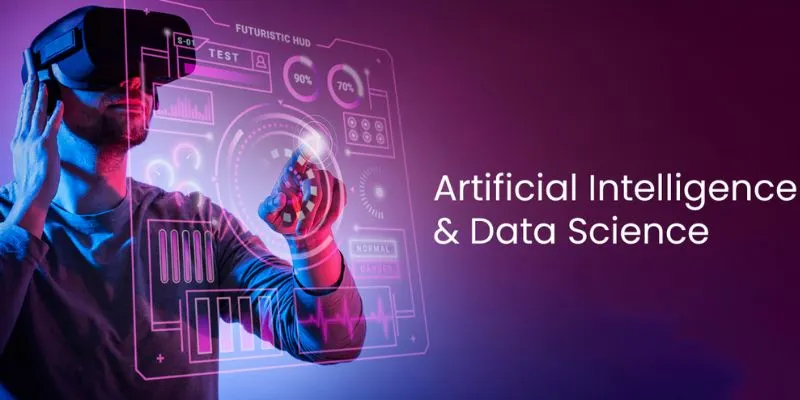
Machine Learning (ML) is now an essential part of Artificial Intelligence (AI) and Data Science. It helps systems to learn from data, make predictions, and generate valuable insights. While basic ML techniques like linear regression, logistic regression, and decision trees are widely used, advanced machine learning methods are increasingly crucial for tackling complex datasets, solving real-world challenges, and driving innovation across industries.
For individuals looking to gain hands-on expertise in these advanced techniques, enrolling in a Data Science Course in Trichy can provide practical training in machine learning algorithms, AI integration, and data-driven problem-solving. This structured learning equips learners with the skills needed to implement sophisticated ML solutions effectively.
In this article, we explore some of the most advanced machine learning techniques that are shaping the future of AI and Data Science, enabling businesses and researchers to extract maximum value from data.
1. Deep Learning
Deep learning is essential to machine learning. It utilizes artificial neural networks to model and analyze data, thereby facilitating the understanding of complex patterns within it. It works especially well with unstructured datasets like images, audio, and text. This technology has changed fields such as computer vision and natural language processing (NLP).
Highlights:
- Employs multi-layered neural networks to extract hierarchical features automatically.
- Excels in recognizing patterns from large, unstructured datasets.
- Requires a significant amount of computing power and substantial data for training.
Use Cases:
- Autonomous vehicles for object detection and navigation.
- Sentiment analysis on social media platforms measures public opinion.
- Medical imaging for accurate disease detection and diagnostics.
2. Ensemble Learning
Ensemble learning helps improve predictions by bringing together several models to create a more accurate system. Techniques like bagging, boosting, and stacking help reduce errors and make models more reliable. By joining an Artificial Intelligence Course in Trichy, you can get practical experience using these methods for real-world AI and data science projects.
Highlights:
- Integrates weak models to form a stronger predictive framework.
- Reduces overfitting while increasing reliability.
- Well-suited for structured and tabular data.
Practical Scenarios:
- Forecasting financial trends and assessing credit risks.
- Detecting fraudulent transactions in banking systems.
- Predictive maintenance in industrial IoT environments.
3. Reinforcement Learning
Reinforcement learning (RL) is a part of the machine learning method. In this approach, an agent learns the best actions by interacting with an environment. The agent gets feedback through rewards or penalties.
Highlights:
- Focuses on sequential decision-making problems and optimization.
- Balances exploration of new actions with exploitation of known strategies.
- Often combined with deep learning to form Deep Reinforcement Learning (DRL) for complex tasks.
Practical Scenarios:
- Game AI development, such as AlphaGo and other strategy games.
- Autonomous robotics for navigation and task completion.
- Personalized recommendation systems for e-commerce and media platforms.
4. Natural Language Processing (NLP) Techniques
NLP lets machines understand, interpret, and produce human language. Advanced ML models like transformers (e.g., BERT, GPT) have significantly enhanced NLP capabilities. Learning these techniques in a Data Science Course in Salem can provide hands-on experience with cutting-edge NLP tools and applications.
Highlights:
- Handles tasks such as text classification, translation, and sentiment analysis.
- Uses embeddings and attention mechanisms for contextual understanding.
- Requires large datasets and extensive pre-training for optimal performance.
Real-World Uses:
- Chatbots and virtual assistants for customer service.
- Automatic summarization of large volumes of text.
- Monitoring social media sentiment and performing multilingual translations.
5. Unsupervised and Semi-Supervised Learning
While supervised learning depends on labeled data, unsupervised learning identifies patterns in unlabeled datasets, and semi-supervised learning combines small labeled datasets with large unlabeled ones to improve model performance.
Highlights:
- Clustering algorithms (like K-means and DBSCAN) reveal hidden data structures.
- Dimensionality reduction techniques, like PCA and t-SNE, simplify complex datasets for visualization.
- Semi-supervised approaches reduce the need for extensive labeled data, saving time and resources.
Practical Applications:
- Segmenting customers for targeted marketing campaigns.
- Detecting anomalies in network security and system logs.
- Preprocessing and feature engineering in complex machine learning pipelines.
Advanced machine learning techniques, including deep learning, ensemble learning, reinforcement learning, NLP, and unsupervised learning, are revolutionizing AI and Data Science. Mastering these methods enables professionals to handle complex datasets, make accurate predictions, and deliver actionable insights across industries. To gain practical expertise and apply these advanced techniques effectively, enrolling in an Artificial Intelligence Course in Salem can provide hands-on training, real-world projects, and a strong foundation in AI and machine learning.
